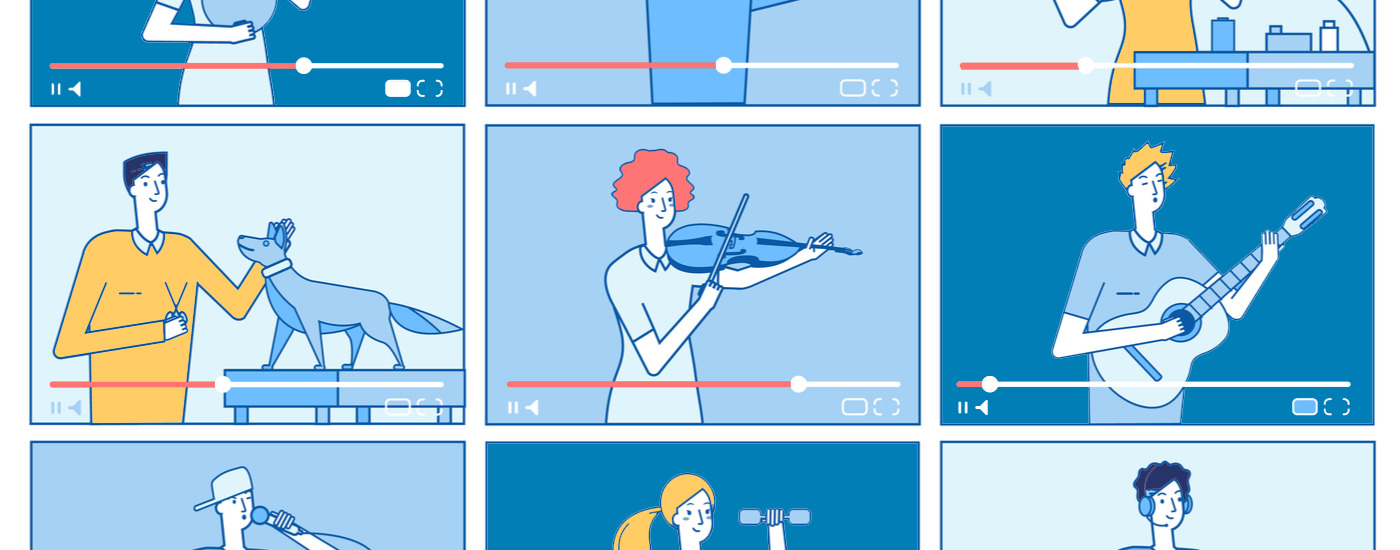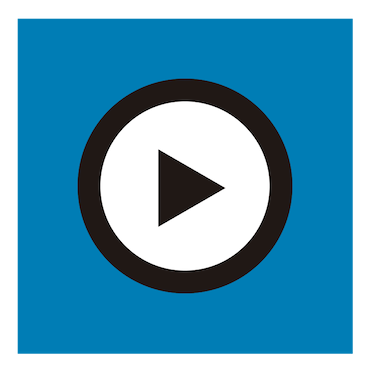YouTube Copyright Rules: Can You Caption Public YouTube Videos?
Updated: September 20, 2023
YouTube is a treasure trove of information, entertainment, and educational video. One of the challenges of using YouTube for education is that most public videos lack accurate closed captions, which are required for accessibility compliance.
If you want to add captions to a YouTube video that isn’t yours, first try contacting the YouTube channel owner and request that they add captions to the video.
If they decline, ask them if they would be willing to allow crowd-sourced captioning. This setting lets users edit YouTube’s automatically generated transcript to create captions for free. Note, however, that this means you need to personally edit (or check the quality of) those captions for adequate accuracy.
But what if you never hear back from the channel owner, they decline your requests, or you just don’t have the time to wait for an answer?
Is it legal to transcribe and add captions to YouTube videos that don’t belong to you?
It is – under circumstances of fair use.
What Is Fair Use?
YouTube captioning and copyright rules are governed by the principle of fair use, a key component of copyright law.
While it is open to interpretation, fair use balances the needs of content creators with those of content users and promotes the evolution and exchange of ideas.
Whereas copyright law is a set of rules, fair use is a set of exceptions of equal importance. YouTube evaluates fair use based on on four factors: purpose and character, nature of the copied work, amount and substantiality, and effect on market value.
The Four Factors of Fair Use
1. Purpose and Character (Is it transformative?)
Copyright Case Law: Google Books
In November, 2013, Google was granted a dismissal of a case brought forth by Authors Guild Inc, which alleged that the Google Books program was in violation of copyright law.
Since 2004, Google Books had been scanning library books and making pieces of the works available online for free. The court decided Google’s use was fair because it only presents a snippet of the book and does not diminish the market for the original work.
Furthermore, not only is this database a valuable research tool for the public, but the original copyrighted works become transformed when digitized since they are used in a way not previously intended.
The court also found that digitizing books was transformative because it enabled the books to be digitally searched and available for “data mining” or “text mining” for research.
The first and most important factor of fair use is the purpose for using the copyrighted material.
If your use of the content causes it to take on new meaning, it is considered “transformative,” and potentially falls under fair use.
For example, if a music video initially meant to entertain is used to review the portrayal of women in rap culture, it transcends its original purpose (from entertainment to commentary), and thus is considered transformative.
How does this apply to video captions?
Adding captions to a video makes it accessible and educational, creating new meaning beyond the nature of the original work. Also, by applying the logic from the Google Books case (see sidebar), captions and searchable transcripts enable “text mining” of spoken content, which further transform the original work.
2. Nature of the Copied Work (Fact or Fiction?)
The factual or fictional nature of content influences fair use.
Factual content is more likely to be protected by fair use because it is usually based on accepted truths. Use of fiction is less likely to be considered fair.
According to the United States Copyright Office, “Copyright protects the particular way authors have expressed themselves. It does not extend to ideas, systems, or factual information conveyed in a work.”
How does this apply to video captions?
The upshot here is that you’re on safer ground if you add captions to factual content rather than creative work. Documentary footage, lecture recordings, or news coverage of a factual nature give educators added protection if those videos are being used for teaching.
3. Amount and Substantiality (How much did you use?)
The third factor of fair use evaluation deals with the amount of copyrighted material used.
Unfortunately, this does not correlate with a specific duration or percentage of a video. Essentially the court asks, ‘Was the amount used proportionately to your cause?’ In some cases, even a small fraction of content may capture the essence of the work and not be considered fair.
How does this apply to video captions?
Because adding captions to a YouTube video doesn’t require re-publishing or editing the original video, this factor may not matter in most situations of fair use.
4. Effect on Market Value (Does your use affect the maker’s profit?)
The final factor of fair use examines the effect of your use on the copyrighted work, specifically in terms of its market value.
A critical facet of copyright law is the protection of intellectual property for financial gain. Legal issues can arise if your copy can substitute for the copyrighted work because consumers might not have an incentive to buy the original product.
How does this apply to video captions?
YouTube videos are monetized by displaying on-screen ads. If you embed a YouTube video on a school website or learning management system with captions, its ads will still stream when it plays. Thus, you are not impacting the earning potential of the original uncaptioned work – in fact, you are adding to the revenue by generating more views!
Fair Use Myth-Busting
It’s important to remember that there is no guarantee you won’t be sued when you use copyrighted material without permission. But fair use of copyrighted material makes for a strong defense in copyright lawsuits.
It should also be noted that no one has ever sued someone for captioning a video for educational purposes.
Now to clear up some myths about fair use:
Disclaimer
Copyright law in the context of captioning videos is a gray area that is open to interpretation. This article is intended for informational purposes only and should not be treated as legal advice.
For a comprehensive analysis of how copyright laws impact third party captioning, watch:
How Copyright and Fair Use Impact Third Party Captioning for Educational Video
Citation
Simply citing the original content creator does not constitute fair use.
Non-Profit Use
A common fair use misconception is that if your use is for a non-profit, it is fair. Not true. It’s not a question of whether your organization is commercial or non-profit, but of whether you are limiting the copyright holder from profiting.
Disclaimers
Disclaimers posted with the content do not protect you from copyright infringement.
Republication
It is NOT fair use to republish a captioned version of a video to your own YouTube channel. This directly damages the copyright owner’s ability to profit from their work, because your video now competes with theirs for viewership.
Original Additions
If you add original content to someone else’s work, that doesn’t make the original content yours.
Legal Exemption for Captioning YouTube Videos for Education
Apart from the four factors of fair use, there is another reason that should comfort educators. Section 107 of American copyright law states that teaching is a purpose that is considered exempt from copyright infringement.
Additional uses that qualify for exemption include criticism, commentary, parody, news reporting, scholarship, and research.
Therefore, captioning a YouTube video that is played in class or assigned to be watched for coursework would qualify as fair use.
How to Caption Public YouTube Videos that Don’t Belong to You
If you are confident that your use of a YouTube video will be fair, how do you go about legally adding captions?
The simplest way is to embed the original YouTube video on a website you control and use a captions plugin that displays closed captions on top of it. You can submit the video for transcription and captioning by copy/pasting the video URL – no illegal downloading required!
For more specific instructions, check out How to Caption Someone Else’s YouTube Video.
Conclusion
A strong legal case can be made for characterizing third-party YouTube video captioning as fair use.
Captions transform the video by making it accessible to people with hearing disabilities and, given the nature of YouTube, should have no adverse impact on the original uncaptioned work.
This post was originally published on January 8, 2014, as “Copyright Law and Fair Use: Is it Legal to Caption Public YouTube Videos That Don’t Belong to You?” by Shannon Murphy and has since been updated.
This blog post is written for educational and general information purposes only, and does not constitute specific legal advice. This blog should not be used as a substitute for competent legal advice from a licensed professional attorney in your state.
Further Reading

Subscribe to the Blog Digest
Sign up to receive our blog digest and other information on this topic. You can unsubscribe anytime.
By subscribing you agree to our privacy policy.








